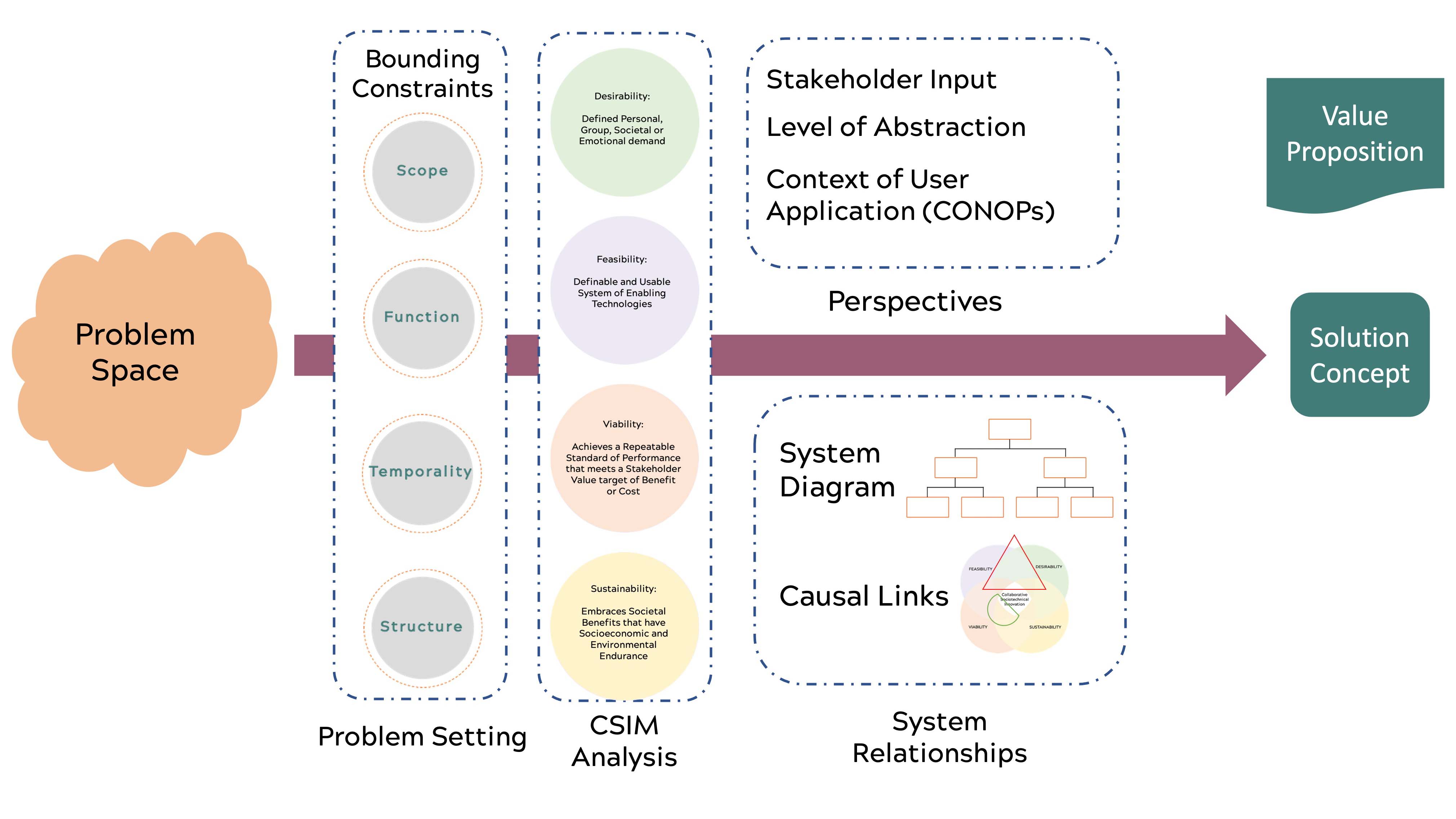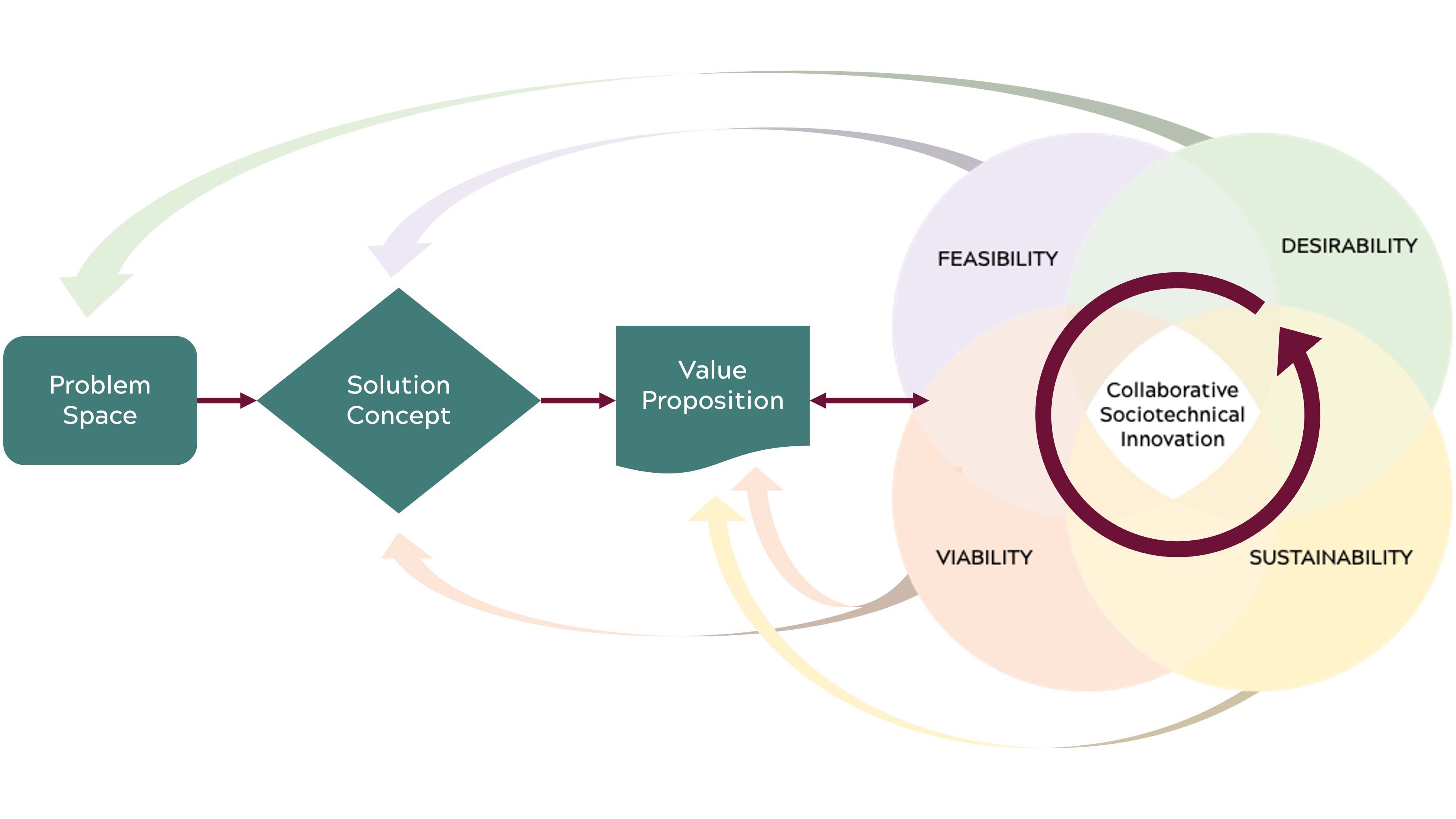Transdisciplinary Studio II focuses on collaborative problem solving. Students in this class will be from the same 14 majors participating in Calhoun Discovery Program (CDP). They take this class on the second semester of their second year of undergraduate study in Virginia Tech. Students in teams work on projects that will leverage the existing and developing capabilities in Collaborative Sociotechnical Innovation Lab (CSIL), Calhoun Discovery Program (CDP) and Honors College Studios' (HCS). This course builds on the methodology introduced in Studio I and will introduce prototyping a system as a way o thinking about and solving problems.
Innovation
A key aspect of this studio is the emphasis on innovation. Students will be introduced to various theories of innovation (e.g., creative destruction, radical innovation) to better understand the gaps that they can address. In line with the mission of Studio I students are encouraged to take a human-centric approach and leverage the power of design thinking to develop a conceptual product that addresses a real need.
System Prototyping
Before prototyping a product/service/process for optimization or better performance students will begin with prototyping the system that the product is part of. Analyzing the entities of the system, their form and relationship (Cf. Cameron, Bruce, Edward Crawley, and Daniel Selva. Systems Architecture. Strategy and product development for complex systems. Pearson Education, 2016).
We introduce prototyping as a way of thinking and solving the problem rather than a means to an end. This approach is aligned with the concept of reflective practice introduced by Donald Schön.

Figure 1. Elements of the concept analysis of a problem space

Figure 2. CSIM sets inform the components of the solution concept
Studio Phases
This studio uses the same subset of NASA project life cycle that we introduce in Studio I (Cf. NASA Systems Engineering Handbook, P.18, Fig. 3.0-1). This studio class has 2 phases. In phase I students choose a project from a set of complex problems already being researched in various areas of Collaborative Sociotechnical Innovation Lab. In the second phase students pitch their own problems that they would like to work on. These projects could be continuation of the problems that they have looked into before or an entire new problem.
Each phase of the studio follows a subset of NASA's project development milestones. These milestones are: Analysis of Alternatives (AoA). Mission Concept Review (MCR), Preliminary Design Review (PDR), and Critical Design Review (CDR). For each milestones students develop video presentation of their research into the problem space. They analyze the problem using system thinking and prototype a conceptual product/service/process.
Peer-Review and Critique
The peer-review for this studio emphasizes the research and development. Students are encouraged to looked beyond the shortcomings of the initial prototypes and discuss the potentials of them. The process and implementation of the critique forms are similar to those of Studio I.
Presentations
Students invite industry and nonprofit partners to their meetings during and outside of class. For each phase partners are invited to provide feedback to the entire class as some of them might not have interacted with all teams. We held the showcase for Spring 2021 virtually. Stay tuned for images of student team's projects that will be posted here after Spring 20212 semester.
Publications
“Toward an Integrative Professional and Personal Competency-Based Learning Model forInclusive Workforce Development” (IMSCI 2021), Amy J. Arnold, Jared Keyel, Alkan Soysal, Michael Kretser, Shahabedin Sagheb, Thanassis Rikakis, JSCI’21:The Journal on Systemics, Cybernetics and Informatics, pp. 22-29, ISSN:1690-4524
“Project-basedLearning Using the Collaborative Sociotechnical Innovation Model” (Accepted in 14th Annual Conference on Higher Education Pedagogy). Shahabedin Sagheb, Amy Arnold,Robert Smith
In The News
A Boeing Exec’s $20 Million Bet on Teaching College Students to Think